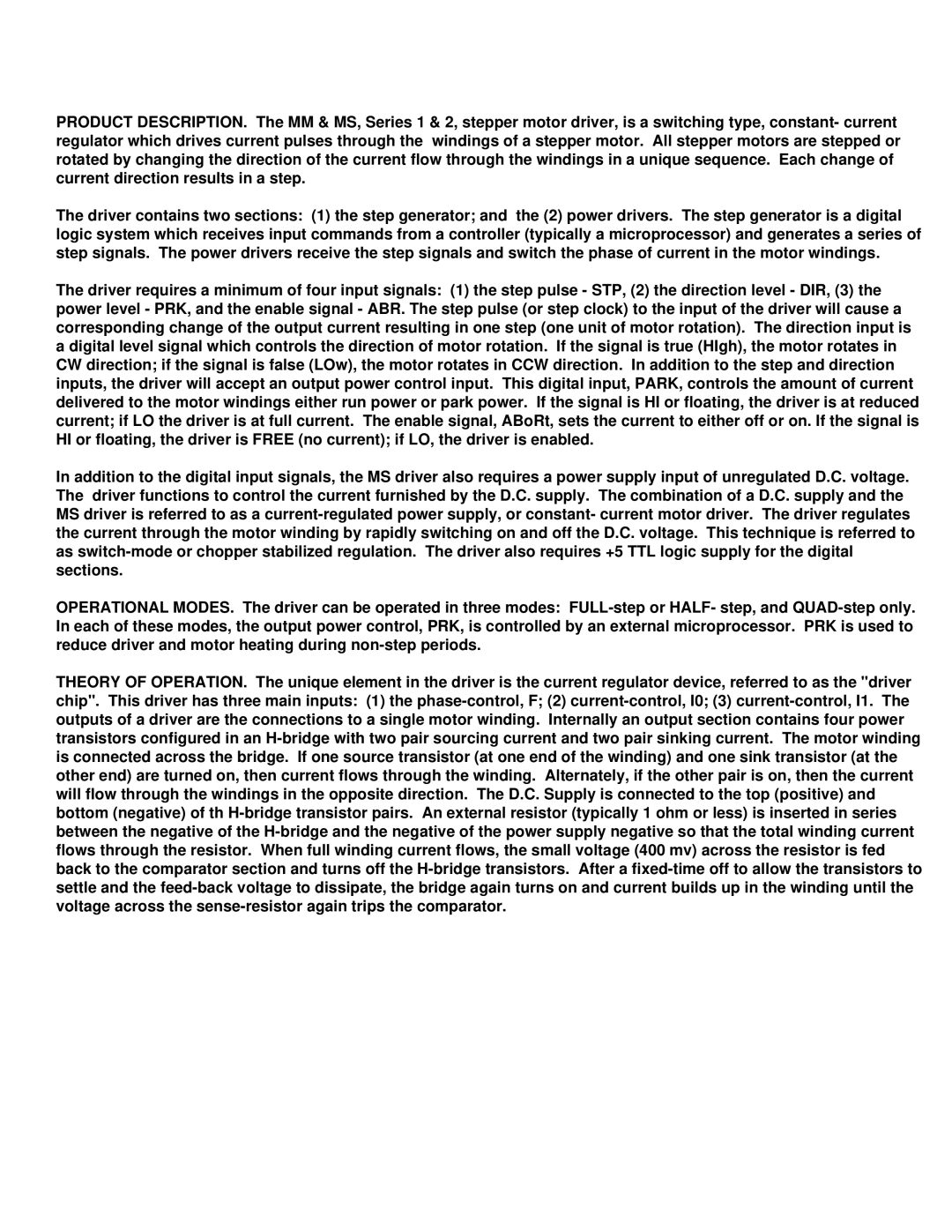PRODUCT DESCRIPTION. The MM & MS, Series 1 & 2, stepper motor driver, is a switching type, constant- current regulator which drives current pulses through the windings of a stepper motor. All stepper motors are stepped or rotated by changing the direction of the current flow through the windings in a unique sequence. Each change of current direction results in a step.
The driver contains two sections: (1) the step generator; and the (2) power drivers. The step generator is a digital logic system which receives input commands from a controller (typically a microprocessor) and generates a series of step signals. The power drivers receive the step signals and switch the phase of current in the motor windings.
The driver requires a minimum of four input signals: (1) the step pulse - STP, (2) the direction level - DIR, (3) the power level - PRK, and the enable signal - ABR. The step pulse (or step clock) to the input of the driver will cause a corresponding change of the output current resulting in one step (one unit of motor rotation). The direction input is a digital level signal which controls the direction of motor rotation. If the signal is true (HIgh), the motor rotates in CW direction; if the signal is false (LOw), the motor rotates in CCW direction. In addition to the step and direction inputs, the driver will accept an output power control input. This digital input, PARK, controls the amount of current delivered to the motor windings either run power or park power. If the signal is HI or floating, the driver is at reduced current; if LO the driver is at full current. The enable signal, ABoRt, sets the current to either off or on. If the signal is HI or floating, the driver is FREE (no current); if LO, the driver is enabled.
In addition to the digital input signals, the MS driver also requires a power supply input of unregulated D.C. voltage. The driver functions to control the current furnished by the D.C. supply. The combination of a D.C. supply and the MS driver is referred to as a
OPERATIONAL MODES. The driver can be operated in three modes:
THEORY OF OPERATION. The unique element in the driver is the current regulator device, referred to as the "driver chip". This driver has three main inputs: (1) the
